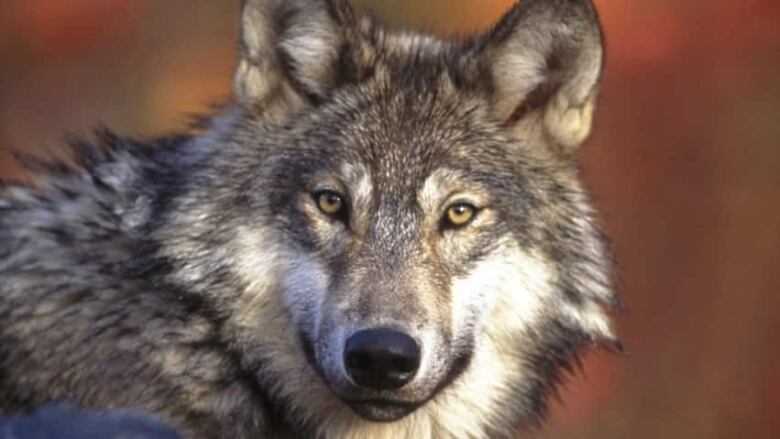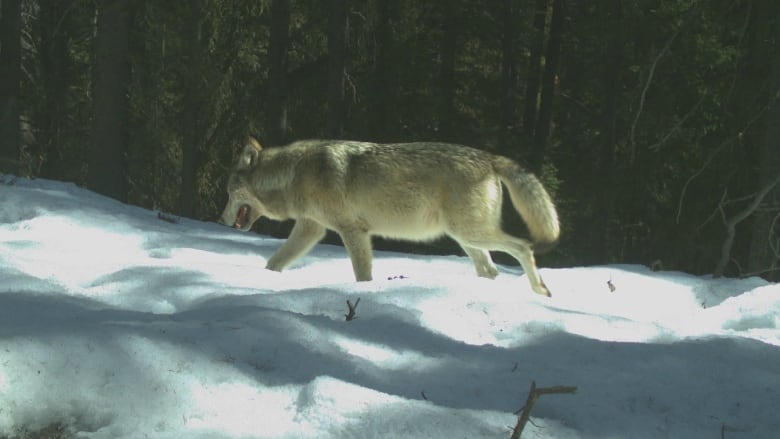New wolf deaths raise call for trapping 'buffer zone' outside Banff National Park
Animals don’t recognize boundaries, and radio collars provide no protection against traplines

The deaths of two more collared wolves just outside Banff National Park boundaries has some calling for a buffer zone to protect wildlife from trapping just outside the park.
"These wolves spend about 80 per cent of their time in the parks but they also wander beyond the boundaries," said Jodi Hilty, chief scientist with Y2Y, the Yellowstone to Yukon Conservation Initiative, based in Canmore.
"In this particular case, we know that these two park wolves were trapped outside of the park."
The two wolves were part of a pack known to roam through Banff and both were wearing radio collars for research purposes.
"I'm really sorry that this is happening because the challenge for us is that parks are just too small for animals like wolves and other large-ranging wildlife," Hilty told the Calgary Eyeopener.
"The challenge that this puts in our face is that what's happening on the boundaries of parks can inadvertently affect the ecological integrity inside of parks."
The deaths are raising questions about how, and whether, wolves should be trapped just outside the boundary, and how they can be protected. Hilty said there were 11 wolves found in the traplines north of the park recently.
"One of the most successful examples actually is creating buffers, and limiting certain activities that could impair wildlife that mostly reside within the park," Hilty said. "That could be changing restrictions on whether you're allowed to bait, because there's some question if the bait is actually attracting animals to leave the park."

Hilty said Yellowstone National Park created a buffer zone that had more limited trapping, "so they wouldn't inadvertently trap all of the wolves from within that park," and that they limit the number of wolves per trapper. The Yellowstone buffer ranges from 11 to 25 kilometres along the north part of the park.
"So that's one example of a model that has worked elsewhere," Hilty said, adding that it's crucial for conservationists and trappers to work together on the solution.
"I absolutely think that's important, to include the stakeholders who are involved and come up with solutions that everybody can agree to together," she said.
The two collared wolves were part of the Panther-Cascade pack, one of three packs known to reside mostly within the park.
"We lost the Bow Valley pack," she said. "We think that there is maybe no wolves or maybe only one wolf left in the Panther-Cascade pack. And, you know, there were only eight wolves in the Red Deer pack, and one of the females that was the breeding female in that pack was one of the radio-collared wolves that was unfortunately trapped in January here, and that can have a big impact on upsetting pack dynamics."

Hilty said that when a pack is wiped out, it takes a long time to re-establish, and that affects the overall ecosystem dynamics in Banff National Park.
"In the province of Alberta, wolves are considered vermin, and so there really are no limits on taking a wolf," Hilty said.
"In Alberta, wolves are not considered to be a species at risk. There are thought to be about 7,000 wolves, and about 700 are taken per year. Right now, it appears that in places they're doing well, but they're certainly, in this example, being affected in protected areas."